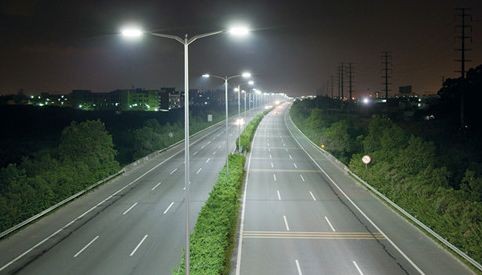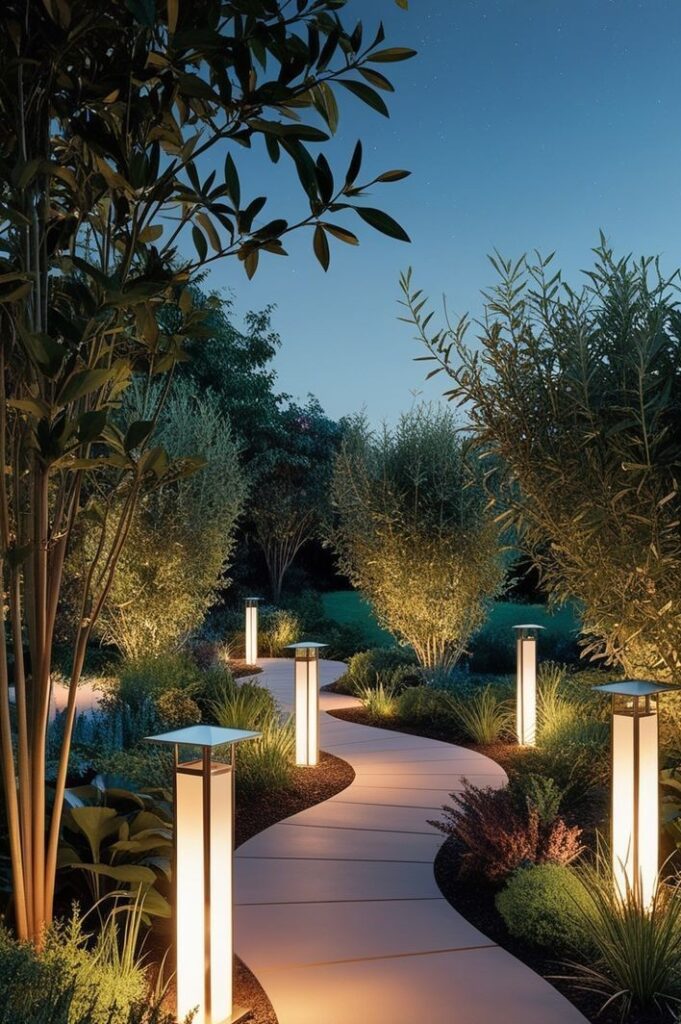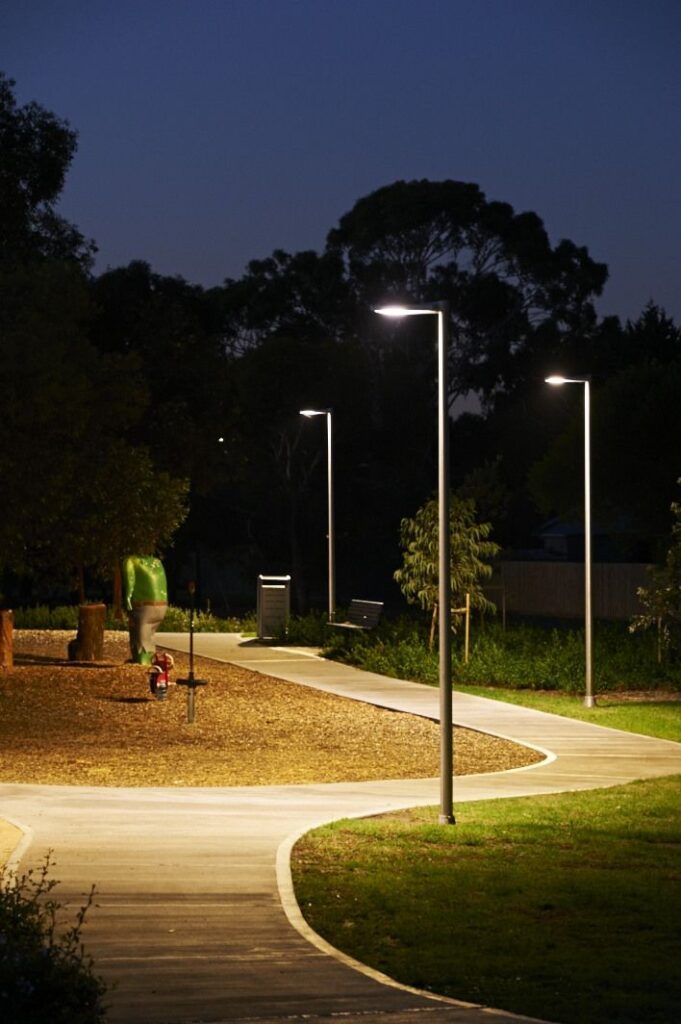Street and Alleyway Lighting
Street and alleyway lighting is one of the most basic needs of modern urban planning, which has a direct impact on the safety, beauty and efficiency of urban spaces. Appropriate lighting systems can improve the quality of life in cities by reducing traffic accidents, improving social security and creating a pleasant environment for pedestrians and drivers. The design and implementation of highway, street and alley lighting is not only effective in reducing energy consumption and costs, but also plays an important role in the attractiveness of urban environments from an aesthetic point of view. The use of advanced technologies such as LED lights and smart systems in this area has created a great transformation and enabled optimal lighting management. Standard and appropriate lighting on highways, streets and alleys, as part of urban infrastructure, plays a vital role in better user experience and reducing the tensions of daily life.
Principles of Street Lighting
The design and implementation of street lighting is one of the most important elements of urban infrastructure that has a significant impact on the safety, efficiency and attractiveness of urban environments. To achieve a standard and effective lighting system, the following principles must be observed:
1. Ensuring safety
Street lighting should be such that sufficient visibility is provided for drivers, pedestrians and cyclists. This helps reduce accidents and increase public safety.
2. Uniform light coverage
Lighting should be distributed evenly throughout the street to prevent the creation of dark spots or excessive lighting in some areas. Uniform light provides better visibility and reduces eye fatigue.
3. Choosing the appropriate height of lights
The installation height of lights should be determined based on the type of street (highway, street, alley) and its use. On large streets and highways, lights with higher heights are usually used, and on alleys, shorter lights.
4. Meet light intensity standards
Light intensity should be adjusted according to the type of road and its traffic. For example, highways require higher light intensity, while residential streets should have softer and lower lighting to avoid light pollution.
5. Use of energy-efficient technologies
To reduce energy costs and protect the environment, it is recommended to use energy-efficient light sources such as LED lights and solar systems. In addition to low consumption, these lights are also durable and highly efficient.
6. Light pollution control
Lighting should be designed in a way that prevents excessive light from shining into the sky or unnecessary areas. This helps maintain nighttime beauty and reduce negative impacts on the environment.
7. Appropriate light color
The choice of light color temperature (such as white or yellow light) should be based on the type of passage and the needs of users. For busy passages, white light is more suitable, while for residential areas, yellow light provides more relaxation.
8. Continuous maintenance
Regular maintenance is essential to maintain the efficiency of the lighting system. Timely replacement of broken bulbs and cleaning of lights will increase the useful life of the equipment.
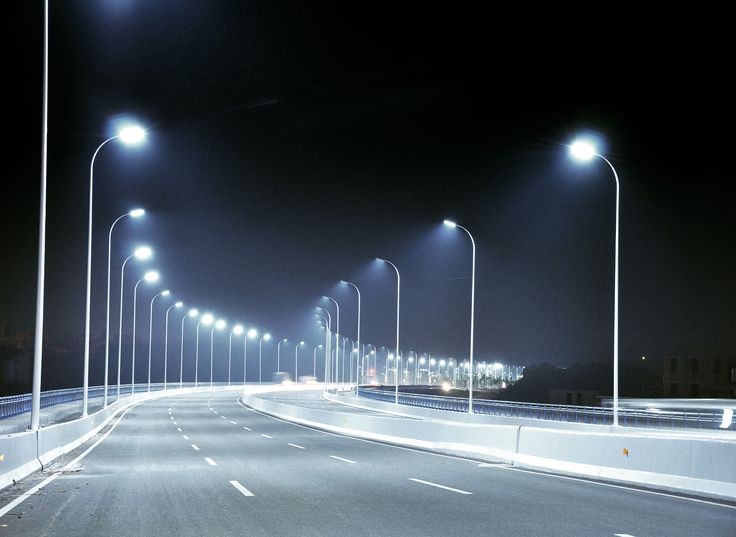
Standard Distance for Street Lighting
One of the important factors in designing a street lighting system is determining the standard distance between street lights. The appropriate distance between lights plays a fundamental role in ensuring uniformity of light, increasing safety and reducing dark spots. This distance is determined based on the type of street, the height of the lights, the type of lamp and the intensity of the light. The following are the general standards for the distance between lights on streets:
1. Main streets (highways and highways)
- Light distance: 35 to 50 meters
- Installation height: 10 to 15 meters
- Lights are usually installed on one side or in a zigzag pattern on both sides. The goal is to provide sufficient lighting for high-speed drivers.
2. Urban streets
- Light spacing: 20 to 35 meters
- Installation height: 8 to 10 meters
- On busy streets, lights are usually installed on both sides of the street and at symmetrical distances to provide uniform lighting.
3. Alleys and side streets
- Light spacing: 15 to 25 meters
- Installation height: 6 to 8 meters
- On narrow and low-traffic streets, lights are usually installed on one side and the light intensity is lower to prevent light pollution.
4. Areas and sidewalks
- Light spacing: 10 to 20 meters
- Installation height: 3 to 5 meters
- Shorter lights are used to illuminate these spaces to provide soft and suitable light for pedestrians.
5. Urban parks and open spaces
- Light spacing: 12 to 25 meters
- Installation height: 4 to 6 meters
- In these environments, lighting design should not only provide illumination, but also have an aesthetic aspect.
Factors affecting the distance between lights:
- Light type: LED lights can be spaced further apart due to their higher light output.
- Width of the passage: The wider the passage, the closer the distance between lights.
- Light intensity: Passages with higher traffic require lower light intensity and spacing.
- Passage use: Industrial or commercial passages usually require more lighting.
International Standards:
According to global standards such as IESNA and CIE, street lighting design should be such that light uniformity of at least 0.4 and light intensity between 5 and 50 lux (depending on the type of street) are observed.
Adhering to the standard lighting spacing in street lighting reduces installation and maintenance costs, reduces light pollution, and increases user safety.
Key Benefits of Using LED Light Sources
LED light sources are a smart choice for modern lighting due to their high light output and low energy consumption. This technology is long-lasting, requires less maintenance, and is cost-effective. LED lighting also helps to improve energy efficiency and create diverse spaces by producing less heat and being able to adjust the intensity and color of light. In addition, LEDs are an environmentally friendly option due to their reduced light pollution and the absence of harmful substances.
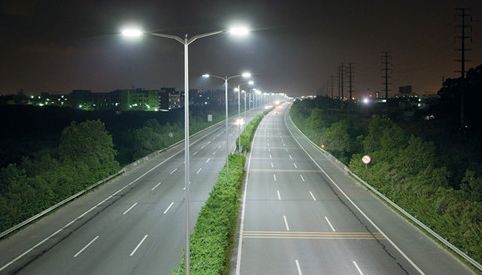
Highway Sidewalk Lighting
Highway sidewalk lighting is one of the key factors in improving the safety and comfort of drivers. This type of lighting aims to provide adequate visibility along the route, reduce the risks of poor visibility, and prevent accidents. Highway sidewalk lighting should be designed to eliminate dark spots and distribute light evenly.
Important features of highway sidewalk lighting:
- Appropriate height of the lamp base:
The height of the lamps is usually chosen between 12 and 18 meters to provide wider coverage and prevent unnecessary shadows. - Use of LED lights:
Due to their high efficiency and lower energy consumption, LED lights are the best option for lighting the roadsides of highways. These lights are more durable and their maintenance costs are also lower. - Weatherproof design:
Lights and light bases should be resistant to wind, rain, dust and other adverse weather conditions to increase the useful life of the system. - Appropriate light color and intensity:
White or neutral light with sufficient intensity (about 20 to 30 lux) is recommended for highways to improve driver visibility and reduce eye fatigue. - Installing lights at standard intervals:
The distance between lights should be determined based on the width of the highway, traffic speed and type of traffic. Typically, this distance is between 35 and 50 meters.

 English
English العربية
العربية